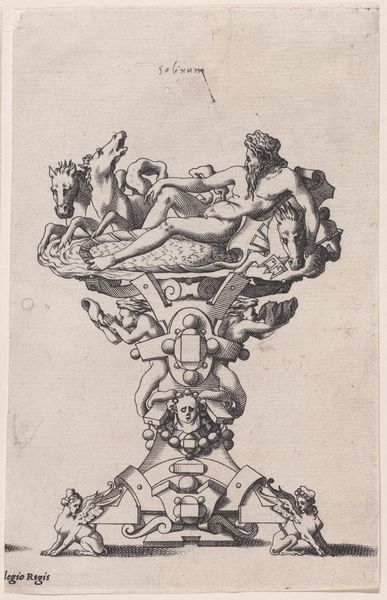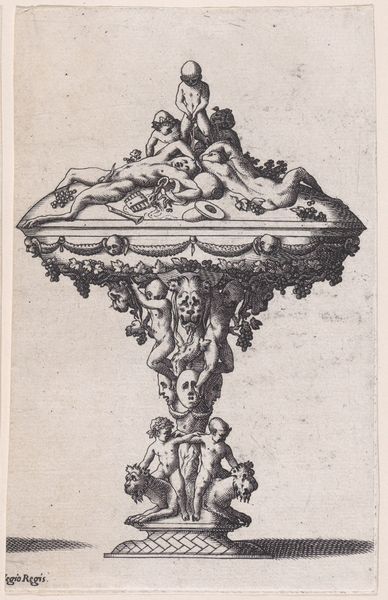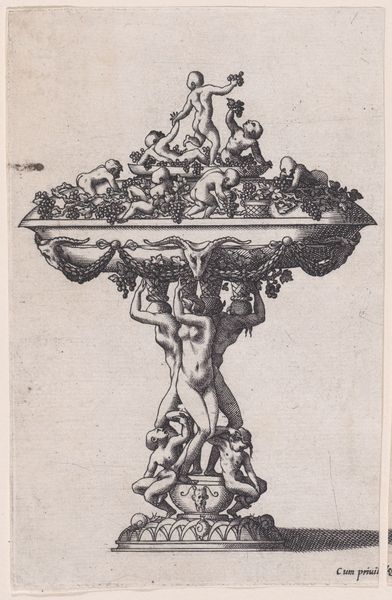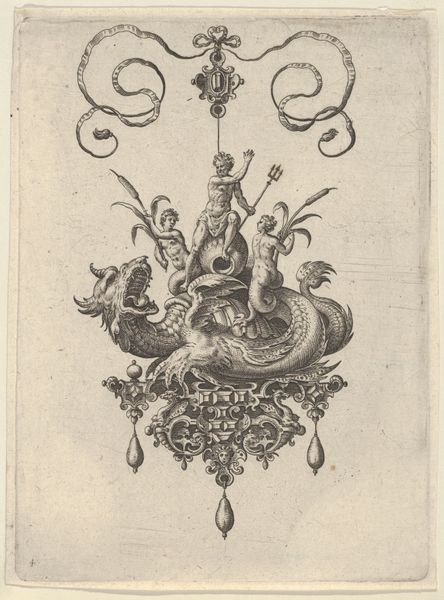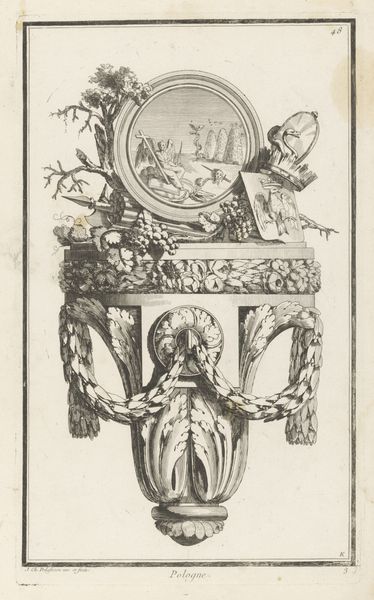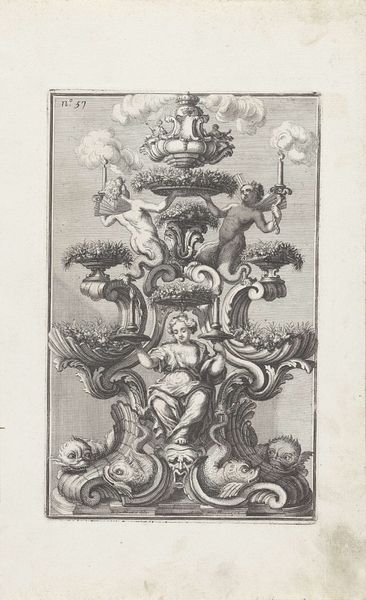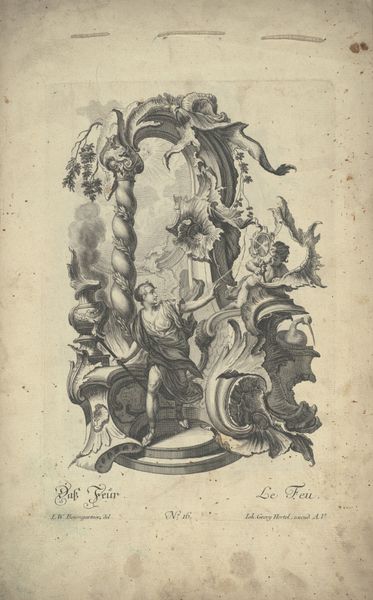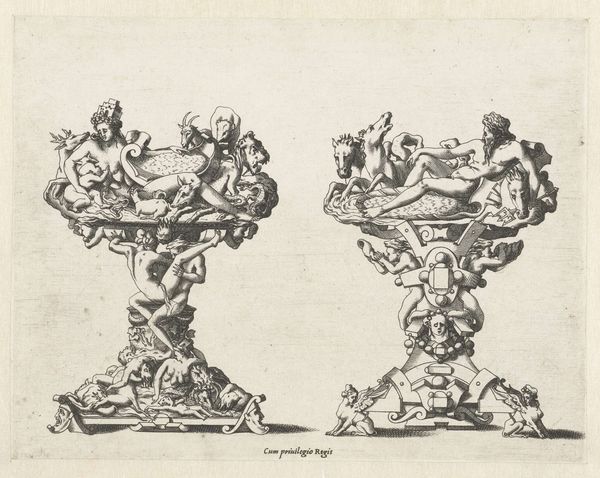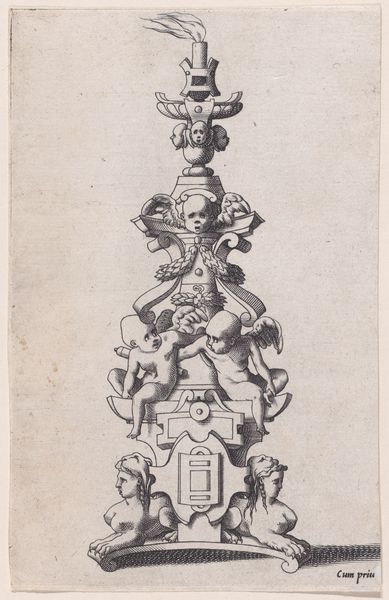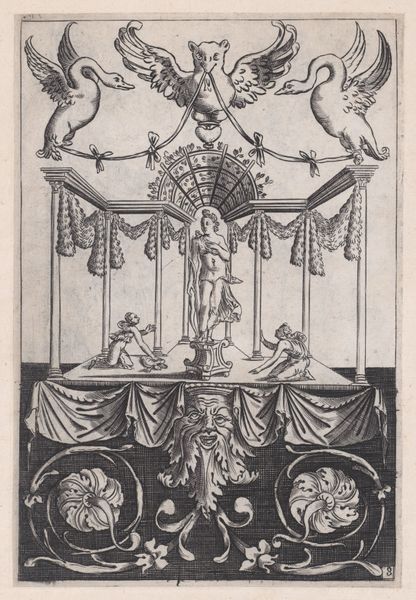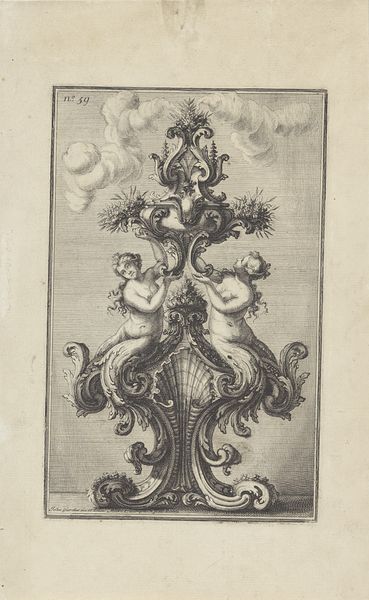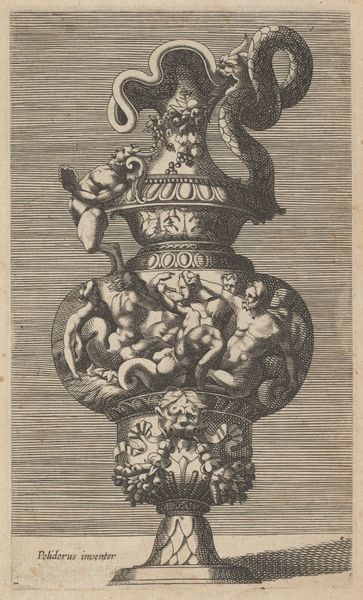
print, engraving
#
allegory
# print
#
mannerism
#
figuration
#
history-painting
#
engraving
Dimensions: sheet: 5 1/2 x 3 9/16 in. (14 x 9 cm)
Copyright: Public Domain
This 'Salt-cellar with Cybèle' was made as a print by René Boyvin in the 16th century, using the technique of engraving. The design, a wildly ornate table-top sculpture, is rendered with astonishing control of line. Notice how Boyvin used hatching to create shadows and three-dimensionality. The material qualities of the print, its crispness, and its reproducibility, are crucial to its meaning. Engravings like this one were not just artworks in themselves, but pattern templates that could be circulated widely. A silversmith in another city, perhaps even another country, might have used it as the basis for an actual salt cellar in precious metal. This reveals a crucial aspect of the Renaissance economy. Luxury goods were increasingly available, but the designs for them traveled even more freely. Prints like this one allowed artists to participate in a network of production, connecting design with labor and consumption. It blurs the line between fine art and applied art, revealing the interconnectedness of creative practices.
Comments
No comments
Be the first to comment and join the conversation on the ultimate creative platform.
